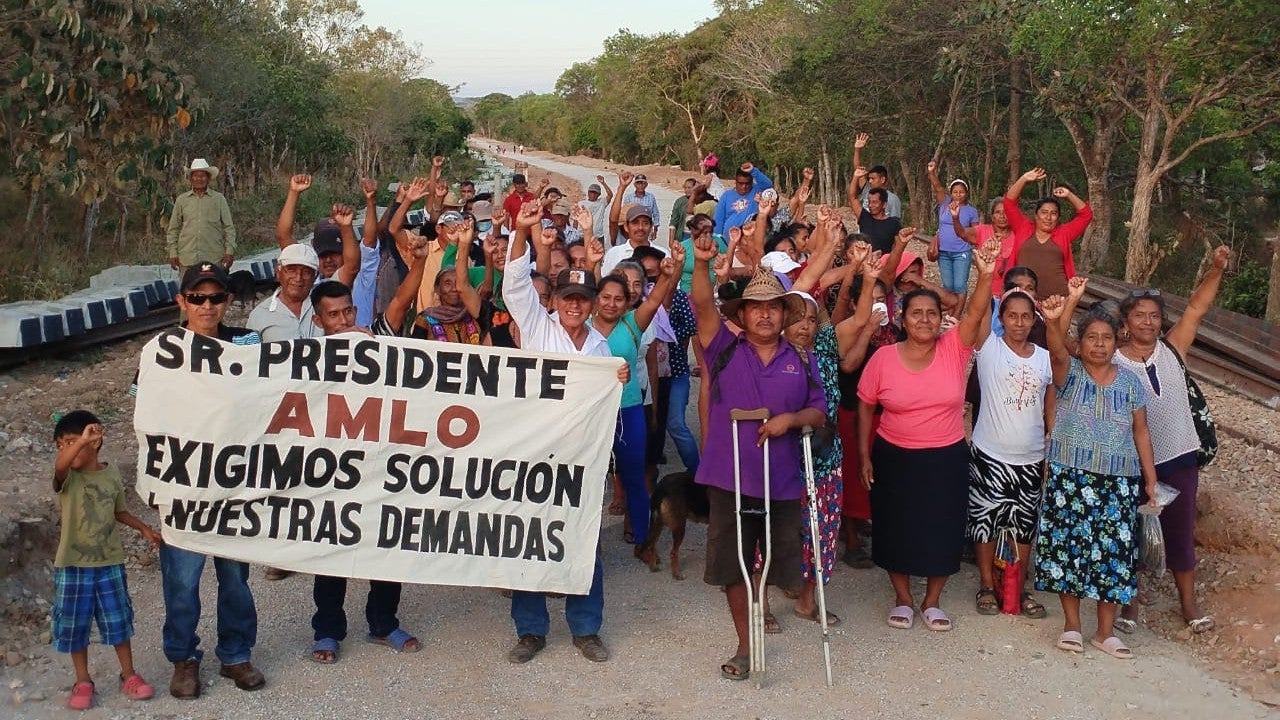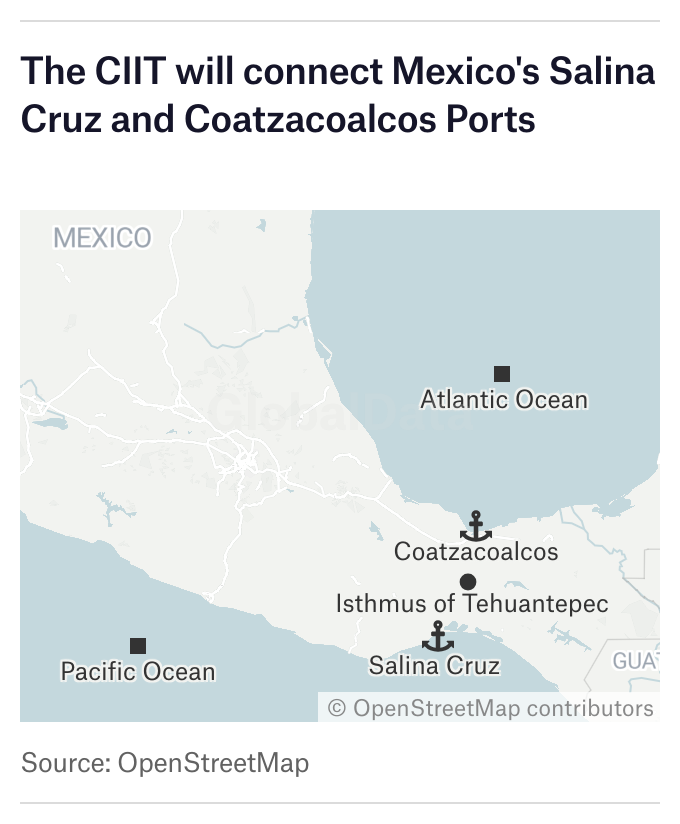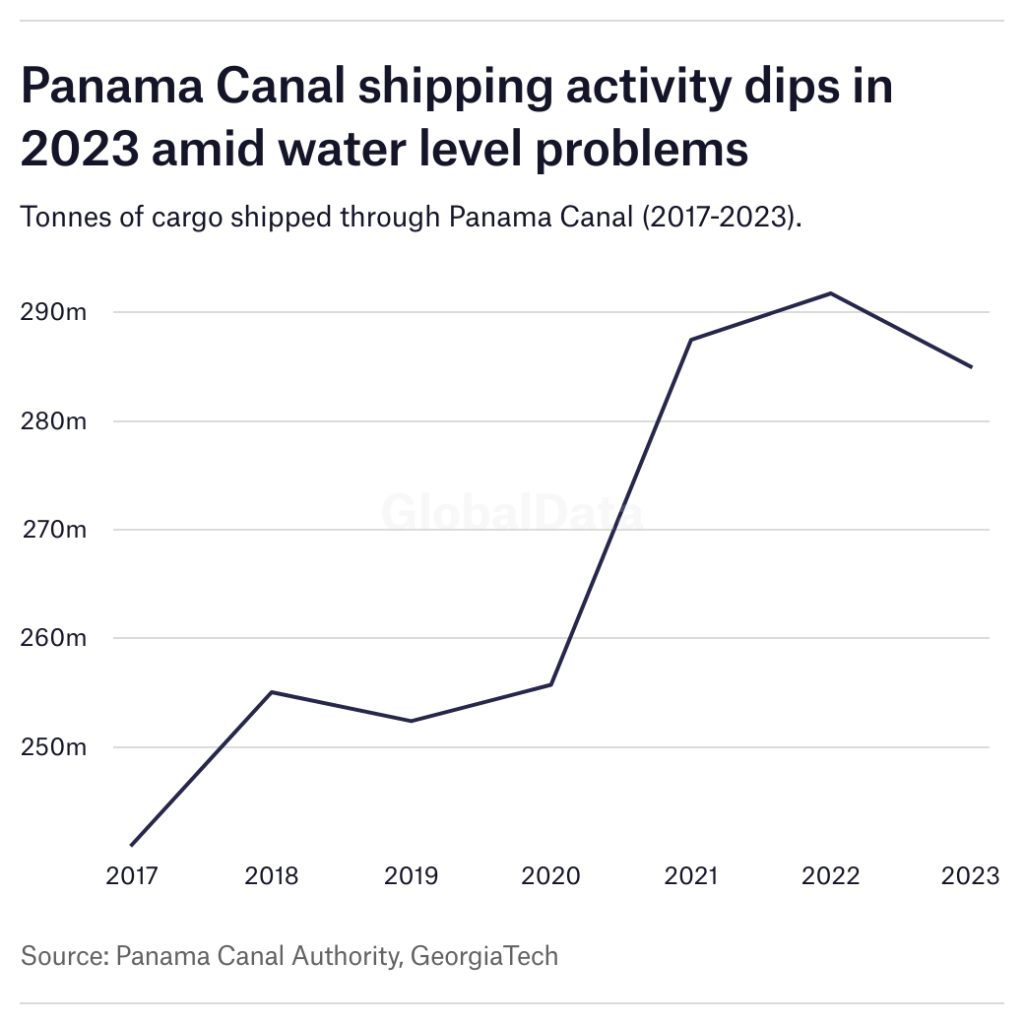
The Mexican government’s promise to invest $2.85bn in the Interoceanic Corridor of the Isthmus of Tehuantepec (CIIT), touted as a rival to the troubled Panama Canal crossing, has been met with backlash among local indigenous communities and scepticism by analysts.
The CIIT involves reviving 300km of defunct railway lines straddling Mexico’s narrowest land point, extending from the Pacific port of Salina Cruz to Coatzacoalcos on the isthmus’ Atlantic side.
“The CIIT does not care for the needs of the local population”, Carlos Beas Torres, member of the Union of Indigenous Communities in the Northern Zone of the Isthmus (UCIZONI), told Railway Technology. “Dozens of families who live in areas close to the railroad are being forcibly relocated”.

Doubts have also been raised over promises of the CIIT’s economic reward.
“The Mexican trans-isthmus rail corridor is not a realistic competitor to the Panama Canal,” Philip Damas, Managing Director of Drewry Supply Chain Advisors, a London-headquartered shipping consultancy firm, told Railway Technology. “It is unlikely to pay back a $3bn investment”.
The local price
Project coordinator Adiel Estrada said the CIIT has created 800 direct jobs and 2,400 indirect jobs in a deprived part of the country.
Mexican President Andrés Manuel López Obrador (known as ‘AMLO’), championed the CIIT project, boasting in a recent video recorded aboard one of the new trains that “we will go … from one ocean to the other in seven hours”.
But local indigenous groups have voiced alarm.
Torres, fellow UCIZONI members and international rights organisations have organised protests and written reports on the environmental damage CIIT will cause.
On 28 April, Mexican soldiers and police officers removed protestors from the “Tierra y Libertad” (“Land and Liberty”) camp formed by the indigenous Mixe community of Mogoñé Viejo in the state of Oaxaca. For 61 days, the camp blocked the construction of one segment of the CIIT’s high-speed rail.

“We were later informed that 16 companions were criminally charged”, Torres added. “But there is still a constant presence of marines, National Guard soldiers and state police at our protests”.
In total, 44 activists and local citizens have been charged by Mexican authorities, according to the pressure group representative.
Torres also highlighted where the investment could be better spent.
“From Salina Cruz to Coatzacoalcos, there are serious deficiencies in the supply of drinking water, waste management, public health, education and electricity”, Torres said. “But investment remains minimal in these areas.”
A rival to the Panama Canal?
Reports indicate that by 2028 the CIIT should carry 300,000 cargo containers each year, reaching 1.4m by 2033.
Mexico intends the CIIT to compete with the Panama Canal. But the canal still sees eight times more traffic than the CIIT is projected to reach, despite serious issues with water levels and backlogs.
The Panama Canal Authority (PCA) statistics showed it handled 14,080 transits and 285m tons of cargo in the fiscal year 2023 (1 October 2022 to 30 September 2023).

This represents a dip from 2022 levels, but the PCA said this was expected “due to the restrictions implemented to preserve water”.
On 1 November, the canal was cut to 25 slots per day – a 35% drop in capacity. The PCA has since reduced this to 24 slots.
Conditions and restrictions followed the Panama Government declaring a state of emergency in May 2023 due to a “historically unprecedented” dry season.
October was Panama’s driest month on record since the registers began 73 years ago.
Water supply in the Panama Canal reservoir system has dropped further, with authorities aiming to maintain its current maximum draft of 44ft.
Delays have seen auction prices skyrocket. On 8 November, Japan’s ENEOS Group paid a record $4m to fastrack one of its LNG carriers.
“If and when the Panama Canal capacity is fully utilised, a rail corridor could help deal with traffic peaks or traffic congestion – but at a much higher cost than the Panama Canal,” Damas said.
“Such a limited role as an alternative, backup transit corridor for international trade is unlikely to pay back a $3 billion investment.”







